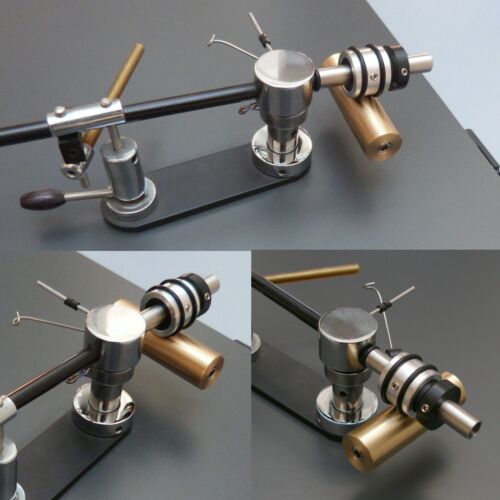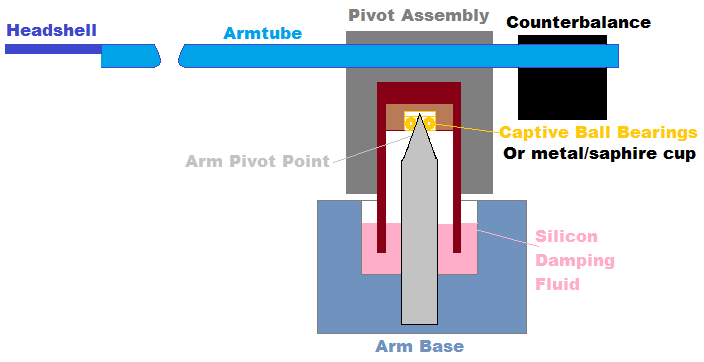Big John
pfm Member
I’ve just got my gramophone back out of its box. NAS Hyperspace TT / Hadcock GH242 arm / AT-VM95ML MM cartridge. The unipivot Hadcock has been a constant source of frustration for me, although it is adjusted correctly I think, such that it should stay that way (PTFE tape and latex glue). Here I exaggerate, it has a mid-rangy, airy sound with little in the way of bass punch.
I thought I’d have a go at adding silicone fluid to the well that contains the pivot spike. The dealer had given me some when I bought it. The bearing housing has a tube that extends down into that fluid, around the spike. There was no indication in the 2006 manual that this could be done and I had no idea what the affect would be.
The sound has now snapped into focus. It is meaty and solid, with bass that punches, but far less air. Other than the “torture track”, it will also now track all of the Hi-Fi News bands with ease, whereas previously it would barely track just the first one. When perturbed, it takes a couple of seconds for the azimuth to return to true and no wobble when lifting the cuing lever. The lateral resonance frequency stayed the same at around 10Hz.
One caveat is that it makes it messy to take off the arm from its bearing, with a string of goop lifting up. I’m not sure if it matters if the fluid gets into the bearing.
i rarely post here these days got vitriolic in some posts though to others not me. i have however written several times on this thread some regarding suggestions to George Hadcock via Len Gregory. which George implemented, I use the much thinner Audio Origami damping fluid fluid from J7. My results were essentially the same as yours. try thinning the well damping fluid a little you may find an audio improvement as well as losing the dog with a bone stringing, if it doesn't work with your set up revert to thicker fluid.
I would also suggest that the XTC underslung counterweight off fleabay makes the arm more stable & easier to set up, also sounds better. John Chong made mine to order some years ago I have no connection to J Chong just a satisfied customer.
Last edited:



